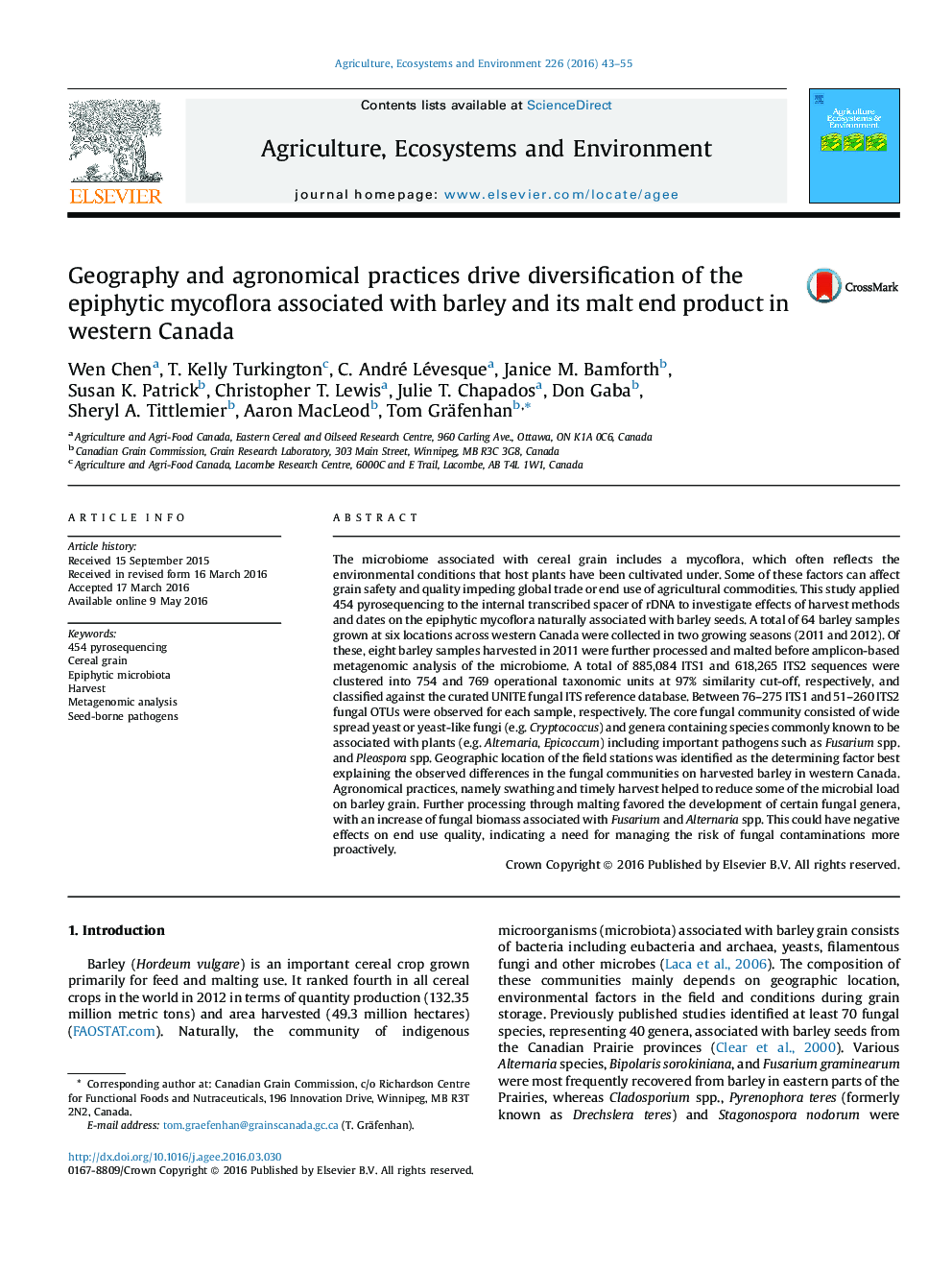| کد مقاله | کد نشریه | سال انتشار | مقاله انگلیسی | نسخه تمام متن |
|---|---|---|---|---|
| 2413513 | 1552026 | 2016 | 13 صفحه PDF | دانلود رایگان |

• Comprehensive investigation of the epiphytic mycoflora on barley grain using NGS.
• Geographic location is the determining factor separating fungal communities of barley grain from different field stations.
• Harvesting methods and dates are associated with risk of fungal contaminations.
• Process of malting alters the mycoflora composition, which may affect end product quality and safety.
The microbiome associated with cereal grain includes a mycoflora, which often reflects the environmental conditions that host plants have been cultivated under. Some of these factors can affect grain safety and quality impeding global trade or end use of agricultural commodities. This study applied 454 pyrosequencing to the internal transcribed spacer of rDNA to investigate effects of harvest methods and dates on the epiphytic mycoflora naturally associated with barley seeds. A total of 64 barley samples grown at six locations across western Canada were collected in two growing seasons (2011 and 2012). Of these, eight barley samples harvested in 2011 were further processed and malted before amplicon-based metagenomic analysis of the microbiome. A total of 885,084 ITS1 and 618,265 ITS2 sequences were clustered into 754 and 769 operational taxonomic units at 97% similarity cut-off, respectively, and classified against the curated UNITE fungal ITS reference database. Between 76–275 ITS1 and 51–260 ITS2 fungal OTUs were observed for each sample, respectively. The core fungal community consisted of wide spread yeast or yeast-like fungi (e.g. Cryptococcus) and genera containing species commonly known to be associated with plants (e.g. Alternaria, Epicoccum) including important pathogens such as Fusarium spp. and Pleospora spp. Geographic location of the field stations was identified as the determining factor best explaining the observed differences in the fungal communities on harvested barley in western Canada. Agronomical practices, namely swathing and timely harvest helped to reduce some of the microbial load on barley grain. Further processing through malting favored the development of certain fungal genera, with an increase of fungal biomass associated with Fusarium and Alternaria spp. This could have negative effects on end use quality, indicating a need for managing the risk of fungal contaminations more proactively.
Journal: Agriculture, Ecosystems & Environment - Volume 226, 16 June 2016, Pages 43–55